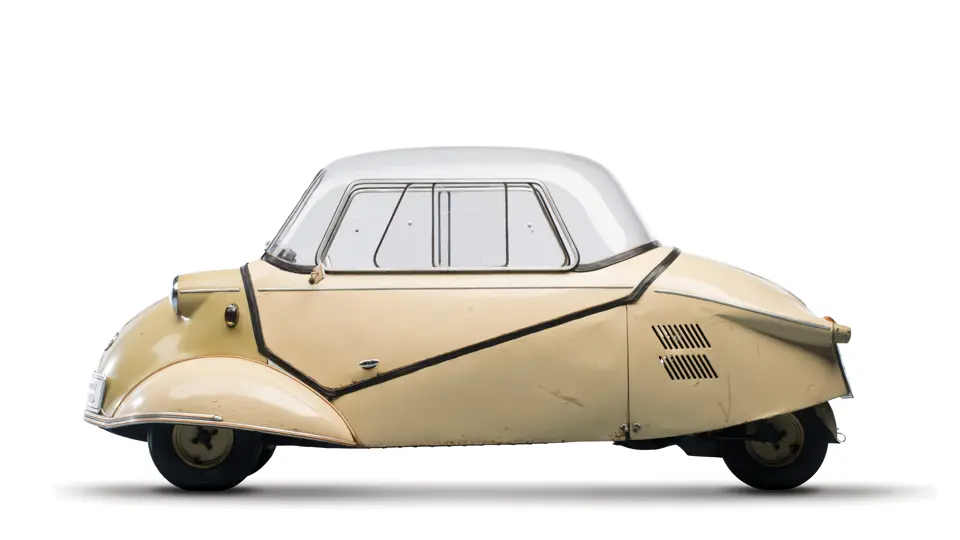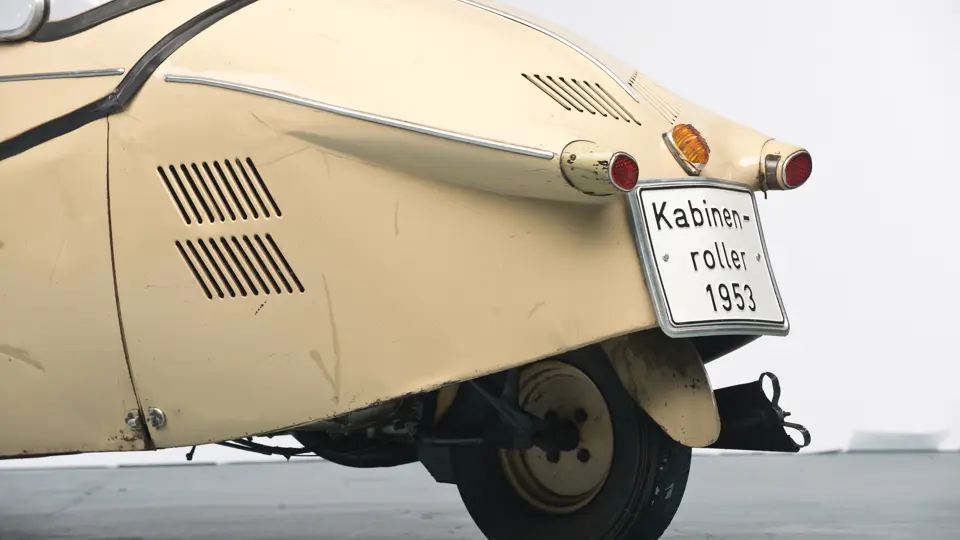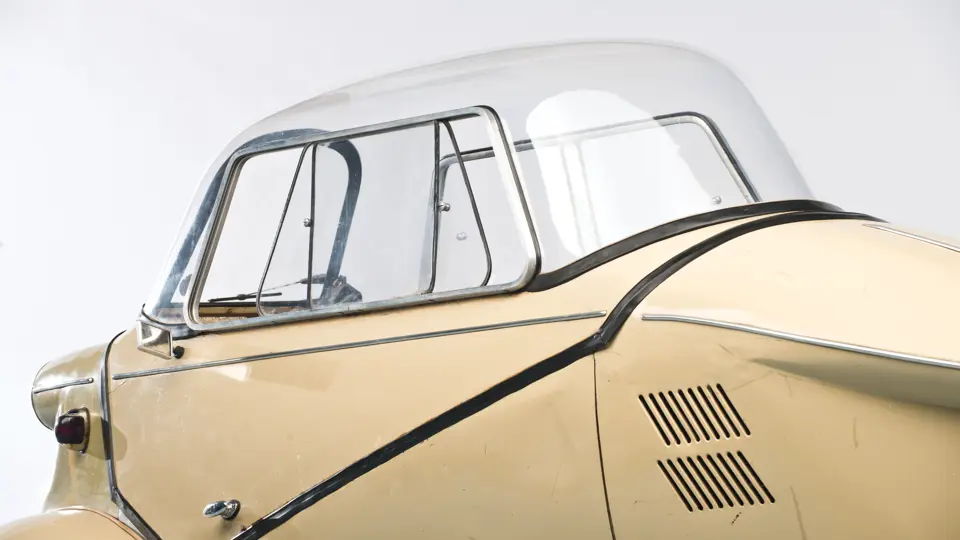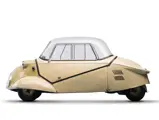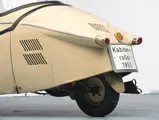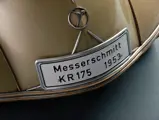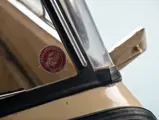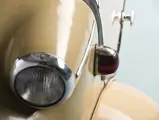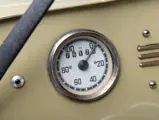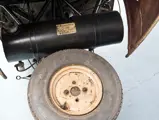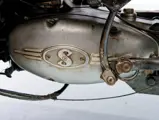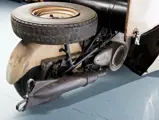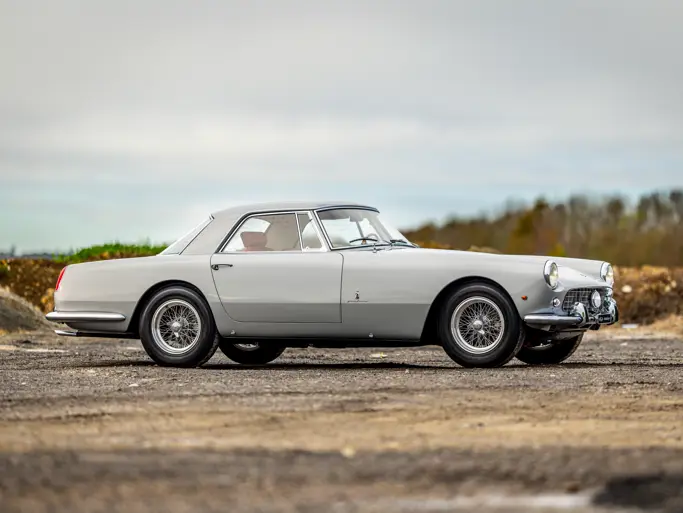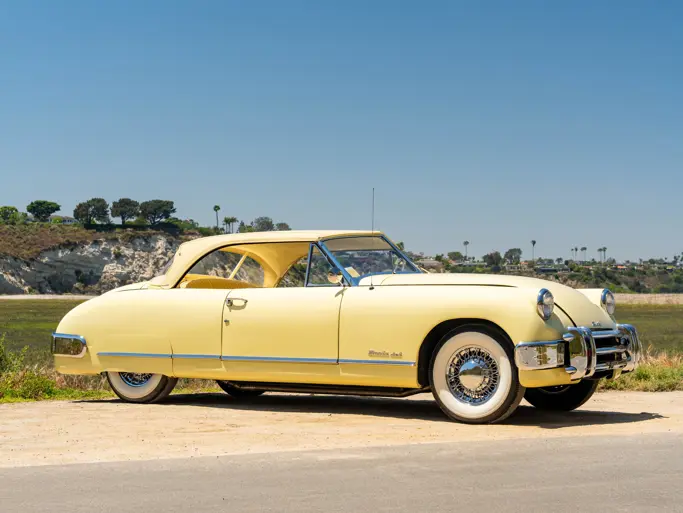A rare, early example with characteristic details and features.
SPECIFICATIONS
Manufacturer: Regensburger Stahl und Metallbau
Origin: Regensburg, Germany
Production: 15,089
Motor: Fichtel & Sachs 1-cyl, 2-stroke
Displacement: 175 cc
Power: 9 hp
Length: 9 ft. 3 in.
Identification No. 2160
Fritz Fend had been a part of the Rechlin test center during the war, compiling data for the landing gear of the new jet aircraft. He returned to Rosenheim and began building self-propelled handcarts for the many disabled veterans who were making do with the typical board on four wheels. He developed his still hand-powered Flitzer into an enclosed vehicle on bicycle wheels. In 1948, it received a 100-cubic centimeter Sachs motor and was identifiable by its smaller wheelbarrow wheels. Open and closed versions were on offer. A 4.5 horsepower Riedel motor from the Imme moped in 1950 made it the Flitzer 101, with an optional blow-up plastic roof, and 150 examples were built. The burgeoning business included his Fend Lastenrollers, and it soon needed more space.
The gifted “aircraft-professor” Willy Messerschmitt was also an innovative industrialist, in charge of eight large companies that had been kept busy despite the ban on building aircraft. The Augsburg works would eventually build 20,500 sewing machines. His recently-rebuilt Regensburg works were occupied by the newly-formed RSM, which was building railroad cars and bridges, with room for another project.
The timely meeting of the two players has been described as follows: Fritz Fend was waiting nervously in the RSM boardroom to deliver his Flitzer proposal to Director Strauch, when the great man walked in to place some papers in front of the director. Messerschmitt turned to leave but paused at the door, turned, and said to Fend, “We know each other, don’t we?” He addressed the committee as follows: “Without this man, our ME-262 would have never left the ground. He is a good man and has done the aircraft industry a great service.” The Kabinenroller’s future was assured.
Fend developed his Flitzer into the now tandem-seat Fend FK-150 (Fend-Kabinenroller), recognizable by its multi-part plastic dome. The body retained the Flitzer’s tube frame, and a subframe sprung by rubber bands carried the Sachs 150 motor. A dozen staff members from Augsburg were sent over to help get it ready for series production. One example, now called Messerschmitt KR 175, was sent to the Geneva Show in March 1953.
The very original car offered here is one of the earliest, late-first-generation cars known to exist, and it offers a plethora of early-car detail, including the rubber band-sprung subframe, the kick-starter, and the open-chain drive. Today, these rarities rank among the most collectible aspects of all Messerschmitts, making this particular example one to take note of.


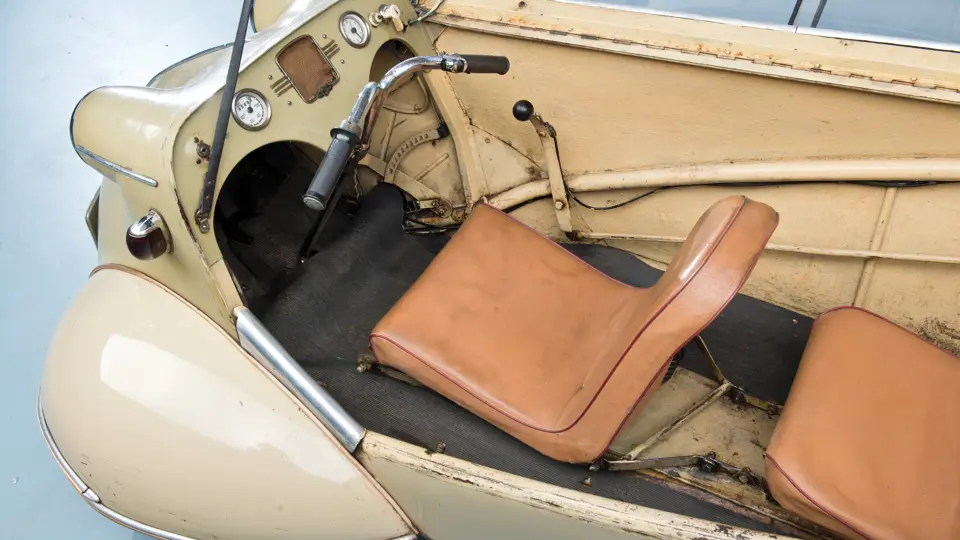




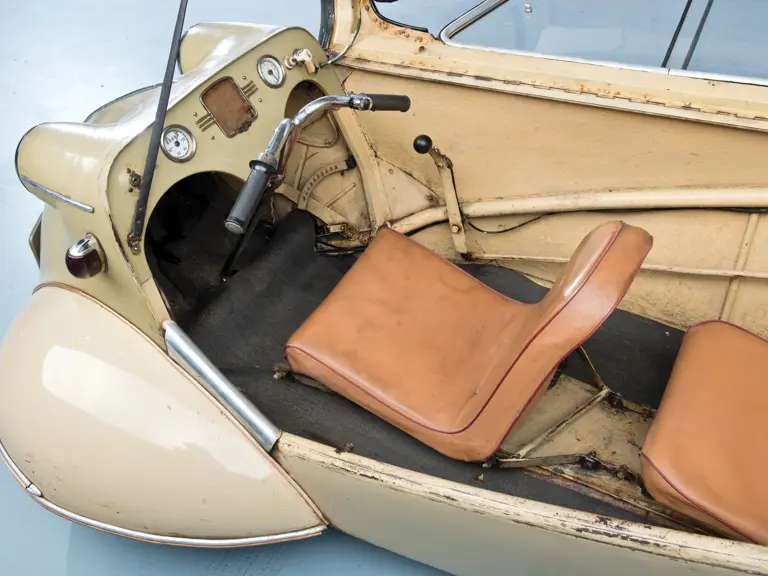

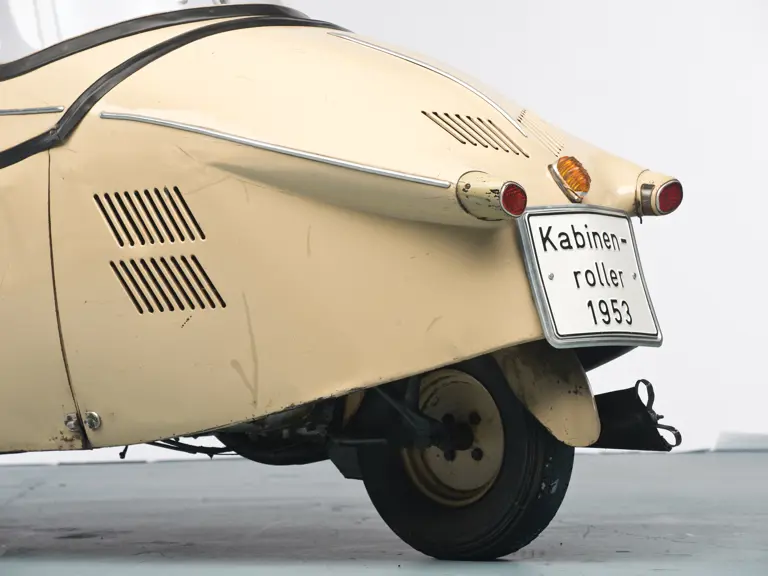
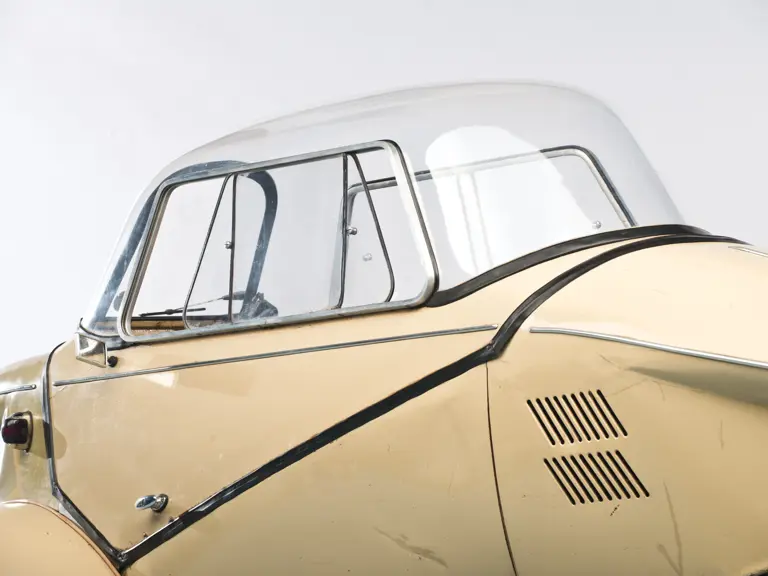


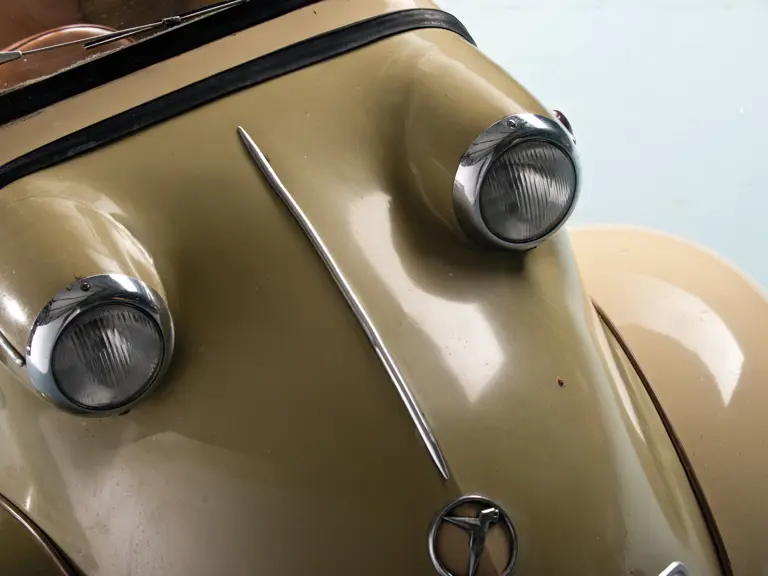

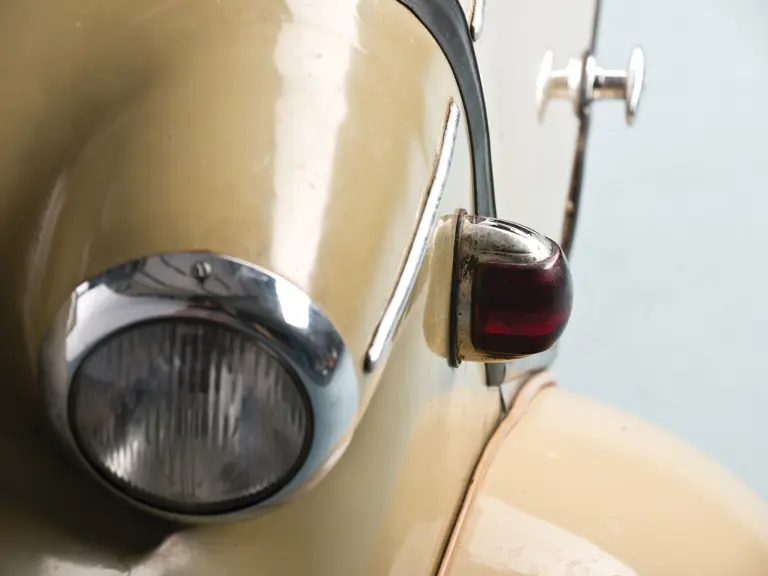

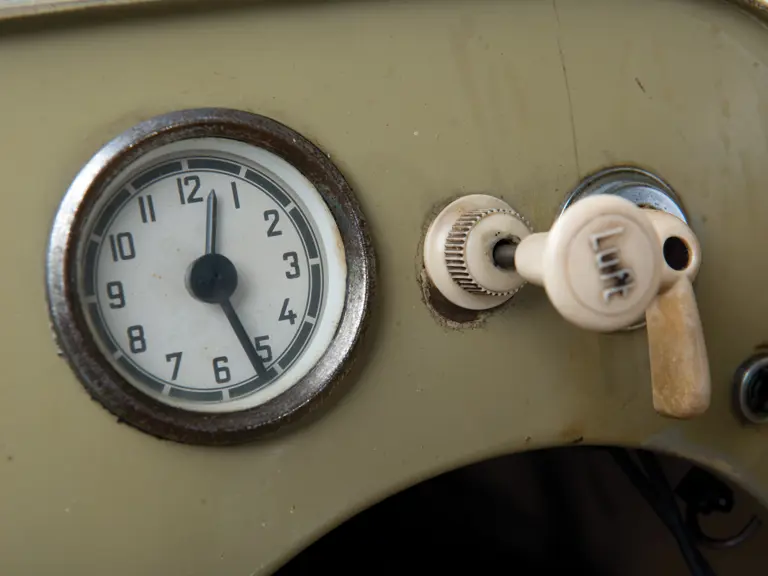
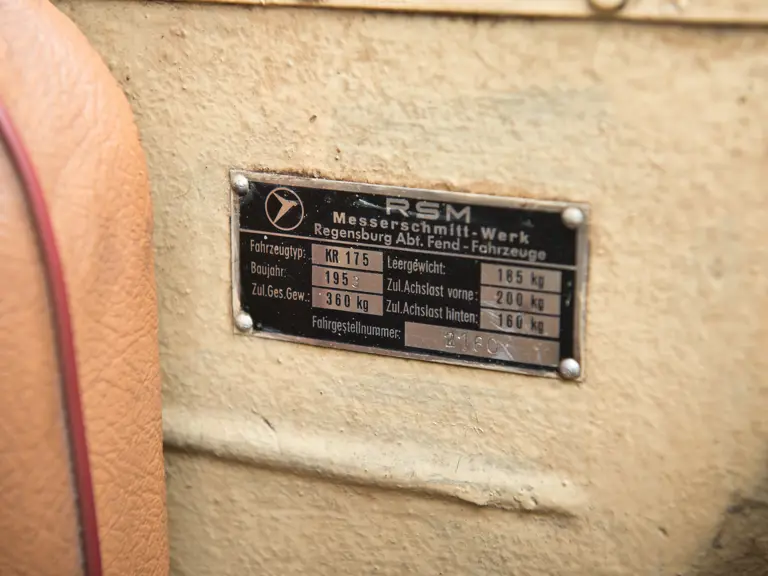
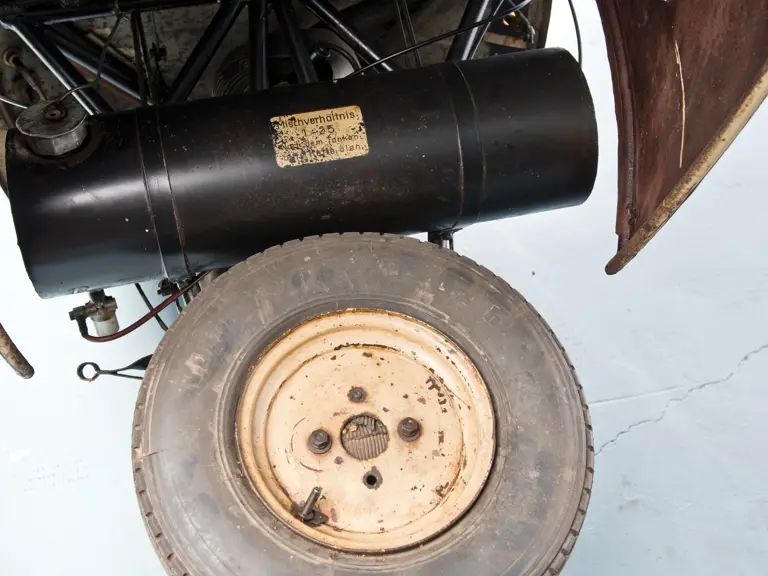
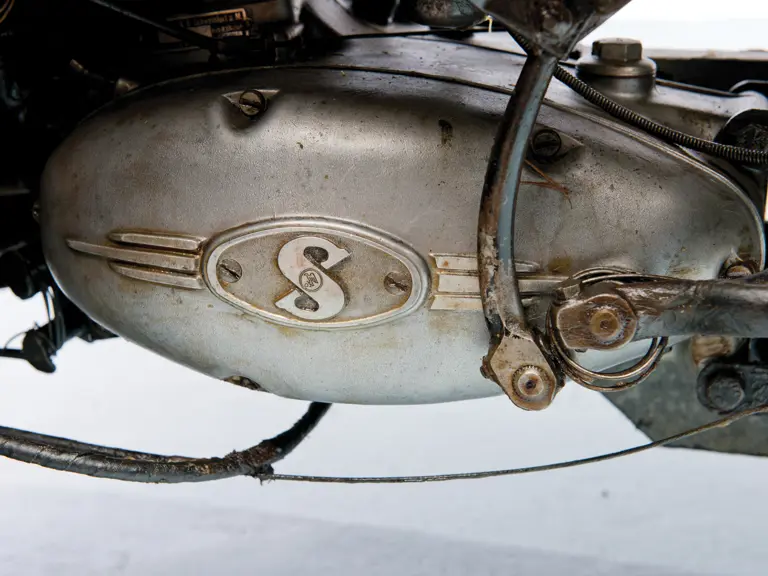
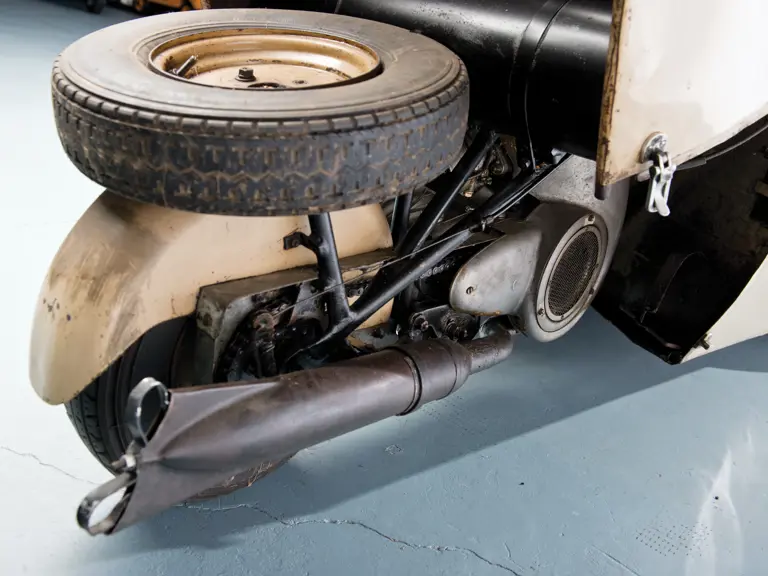

 | Madison, Georgia
| Madison, Georgia
